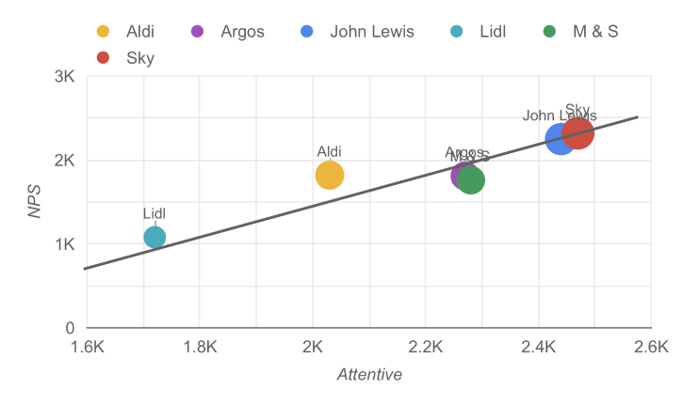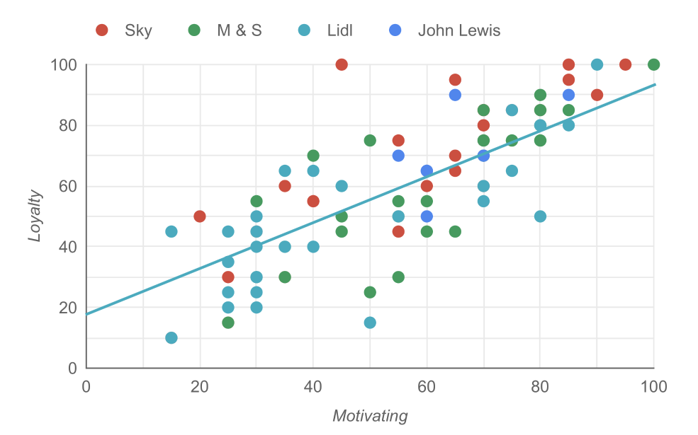TV ads with over 1 million views: our biometric analysis
At 26, we utilise a state of-the-art lab to reduce bias and measure real response to content and media. We utilised the lab and our expertise with psychological experiment design during the holiday season and new year to take six of the most popular television ads and pit them against each other to find out which performed best and the reasons why.
Through facial expression analysis, galvanic skin response (GSR) and questionnaires, we aimed to determine the true feelings and emotions that these adverts evoked, and combined these with eye tracking to tell us what triggered these emotions. These were then followed up with post-hoc brand recall surveys sent out a day after participants had completed the study and a final one sent in the new year to test whether the adverts, and more importantly the brands, stuck in participants’ minds.

The below video shows our visual emotional and eye tracking technology in action:
We chose the adverts based on their brand presence in the UK, with most having over 1 million views and others over 10 million. We also looked for a varied like to dislike ratio, and ended up with a shortlist:
- John Lewis
- Argos
- Sky
- Lidl
- M&S (clothing)
- Aldi
Our participants:

The work that we carry out in our lab is done alongside our specialist Data Science team who use a series of psychometrically developed measures to “score” each advert on many different aspects such as positivity, negativity, focus, motivation, loyalty and disengagement. These are continually developed through learnings found in academic literature and 26's own continuous research and investigation into advertising mediums including posters, adverts and websites.
These help us to create insights into user behaviour to deduce best practices and recommendations for our clients. This also allows us to give each advert a positive and negative score.
John Lewis’s TV ad was most positively received, followed by Sky
Out of all the adverts, only two generated positive scores after users had seen the adverts (scores above 70%). The M&S, Argos and Aldi ads were all rated average (50-69%) whilst the Lidl advert scored below 50%.

The more the advert encourages interaction with the brand, the more cognitively engaging it was
Despite some adverts being very attention grabbing and flashy, the most important aspect was whether it motivated users to interact with the brand. For example, the John Lewis advert demonstrated through a story that although there are issues in life, they can be facilitated by a product they produce, rather than Argos showcasing multiple products that wowed us but did not tie in interaction with the brand - selling the products rather than the brand as a whole.
Generally, we observed a strong relationship between the aggregated measures of attention and the recommendability of the brand after seeing the advert.

Adverts may build brand awareness but they are unlikely to influence shopping behaviour in those who would not have considered the brand previously
Adverts do well in reinforcing the brand as a whole, however as a motivating factor, they are unlikely to sway customers into buying from a brand if they had not considered it before. Therefore, it is more important that adverts reinforce the brand rather than specific products.
People who indicated their level of interaction with the brand did not show any differences in their responsiveness to the brand following the viewing of the TV ad. People were not motivated to engage with a brand if they already considered it in a positive manner.

Don’t be boring, however don’t experiment too much - trying too hard in one area takes away from the other
Being overly traditional without being novel is perceived as boring and therefore decreases motivational engagement and recall. Conversely, being overly novel but lacking any traditional context is equally disengaging and even more forgettable. John Lewis’s advert did this very well, with high scores in both perceived traditionality and novelty resulting in good recall and motivation. Bad recall and motivation were evidenced by Lidl which had a high traditionality but low novelty and Sky which had high novelty but low traditionality, resulting in adverts which were not effective.
Forgetfulness is brought on by being unoriginal, overly novel or having too high a focus on products.

Using an iconic figure that does not link back to your brand effectively will lead to poor performance
Sky’s advert, although featuring a very iconic and well-loved character, had a very low recall rate due to the fact that the advert did not tie back to the brand effectively. Many respondents recalled “the advert with ET” however could not tie this back to the Sky brand as a whole, even though the motivation to interact with the brand was high. Importantly, the experience reported by users was that they loved the advert however could not recall the brand that had commissioned it. With adverts like Argos and Sky, the features do not tie in well with the functioning of the brand, they do not suggest unique solutions or describe the brand’s message - they draw attention but do not necessarily influence recall, even though initially they may be reported as motivating.

Included below are the scores for each advert.

If you're interested, you can find all of the visual emotional and eye tracking video outputs here.
If you’d like a deeper dive or are interested in a project yourself, please contact us at newbusiness@26-agency.com
Our insights
Tap into our latest thinking to discover the newest trends, innovations, and opinions direct from our team.